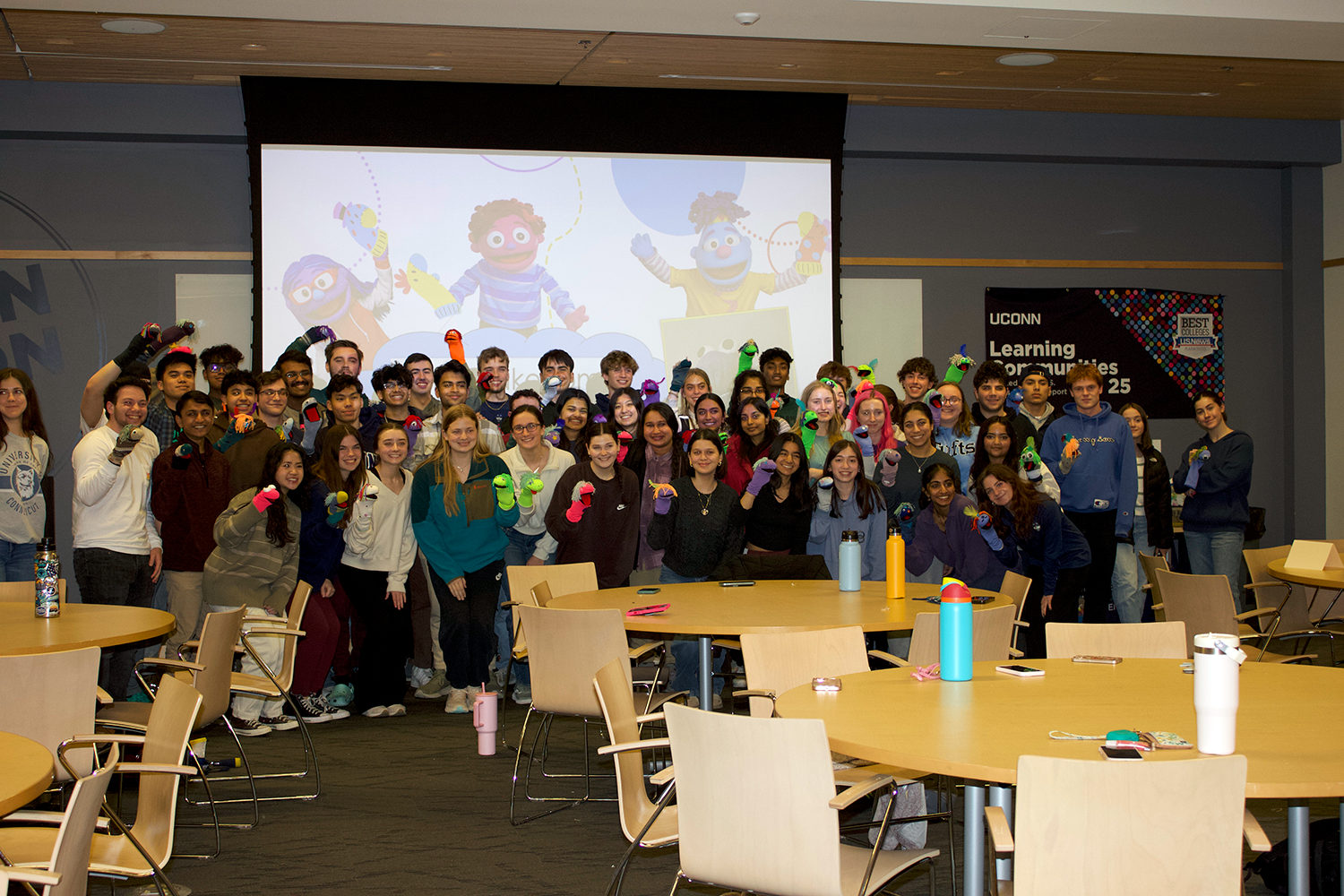
UConn is the place to be – at least according to more than 34,000 high school students, the largest number of applicants ever to seek a spot in the next fall’s freshman class.
That pool of potential freshmen – 34,019 to be exact – met the Jan. 15 application deadline to compete for about 3,500 spots at Storrs and about 1,400 at the Hartford, Stamford, Waterbury, Avery Point, and Torrington campuses.
The applications represent an increase of almost 9 percent over last year, and the average SAT score of the applicants is 13 points higher than last year’s. The percentage of applicants from minority backgrounds – not including international students – also is at its highest point ever, around one-third of the entire applicant pool.
Decision letters will go out for mailing Friday, so students will learn early next week whether they’ve been selected as part of UConn’s Class of 2019.
UConn’s numbers counter trends
The jump in UConn applications runs counter to national and regional trends, in which declines in the number of high school graduates have caused many universities to see their applications and enrollments level off or decrease.
“The University has tremendous momentum and continues to build on that, and high school students and their families are noticing,” says Nathan Fuerst, UConn’s director of admissions. “They want to be part of something special, and they’re seeing the opportunity to do that as a student here at UConn.”
While the population of potential applicants to universities nationwide is declining, a presentation made to UConn’s Board of Trustees on Wednesday shows the University is capturing a larger and more talented piece of that shrinking pie.
Wayne Locust, UConn’s vice president for enrollment management, told trustees that applications and enrollment in special initiatives – such as STEM programs and the Honors Program – have been consistently strong, and are maintaining that momentum this year.
In fact, more than 17,000 of the approximately 34,000 applicants this year are seeking to major in STEM fields (science, technology, engineering and math), up 32 percent in just the last four years.
The increase in applications also comes as UConn is investing in new faculty in critical areas, updating its academic plan, and implementing the Next Generation Connecticut initiative to revolutionize its STEM (science, technology, engineering, and math) curricula.
Reputation helps attract the best candidates
UConn’s reputation for academic excellence, value, commitment to the environment, and service have been recognized by several outside entities in recent years, all of which also are thought to be contributing to the upswing in applications.
UConn has held strong spots each year on the Kiplinger’s Personal Finance’s list of 100 best values in public colleges, and consistently is a Top 25 institution on the annual U.S. News & World Report’s ranking of the best public universities.
University officials also have been more aggressively reaching out directly to talented students statewide and nationally who may be good candidates for UConn.
The numbers are particularly gratifying when considering the landscape of secondary education, in which the U.S. is seeing declines in its number of high school graduates after a significant period of growth.
The Western Interstate Commission for Higher Education found in a study that graduating classes are predicted to consistently decline nationwide and particularly in the Northeast, matching the drop in birthrates that began with the 2007 recession.
As a result, its report says, “Postsecondary institutions will likely face greater competition for fewer recent high school graduates because of absolute declines in the size of that group.”
But UConn has been bucking that trend. While this year’s 34,019 applications from aspiring UConn freshmen are a new record, the numbers have increased steadily since 2001, when the University received about 13,600 applications.
“We’re especially pleased to see that the application pool this year is not only larger, but also very diverse and high achieving,” Fuerst said.
“Drawing an applicant pool of this quality is the sum of many things: our improved rankings in recent years, the increased recruitment efforts, the investments in Next Gen and key academic programs – and of course we’re also proud of the widespread attention that national championships bring in helping to draw student interest in learning more about us.”
A limited number of aspiring students who auditioned for UConn’s School of Fine Arts or applied to a two-year associate degree program in the Ratcliffe Hicks School of Agriculture already received decisions on their applications, as have those who applied directly to enroll in UConn’s regional campuses.
UConn will continue to accept applications for those regional campuses at Avery Point, Greater Hartford, Stamford, Torrington, and Waterbury until July 1.



